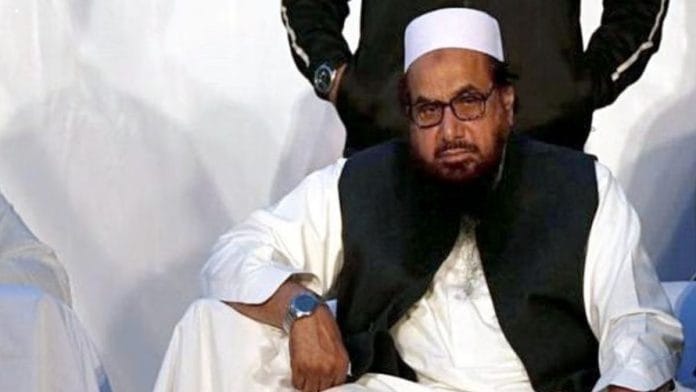New Delhi: The Pahalgam terror attack was immediately claimed by The Resistance Front (TRF), a frontal unit of the Pakistan-based Lashkar-e-Taiba (LeT). However, the TRF backtracked four days later and blamed its earlier claim on hacking by Indian intelligence agencies. This came hours after Pakistan Defence Minister Khwaja Asif denied the existence of the LeT or TRF.
The TRF was formed in 2019 by the ISI when Pakistan was under increased scrutiny of the Financial Action Task Force (FATF).
Sources in the security establishment explained that Pakistan came under pressure to be seen taking action against terror groups and hence carried out public crackdown on various terror groups, largely on the financial front.
To distance itself from the terror activities in Jammu and Kashmir, the ISI decided to give new non-Islamic operational names to the two terror groups, and to project them as indigenous entities fighting the Modi government in Kashmir.
And hence, the TRF was formed as a front for the LeT and the People’s Anti-Fascist Front (PAFF) as a front for the Jaish-e-Mohammad (JeM).
Sources explained the LeT literally works like a Territorial Army unit for the ISI while the JeM, which is also supported and nurtured by the Pakistani military, is slightly independent since they have their own source of funding.
ThePrint spoke to multiple sources in the security establishment to understand what the hierarchy of the LeT is.
The terror outfit is headed by Hafiz Muhammad Saeed, the mastermind of the 2008 Mumbai terror attacks.
His son Talha Saeed has now started taking up his father’s role, sources in the security establishment said. The operational commander of the LeT is Zaki-ur-Rehman Lakhvi, who coordinated several high-profile attacks, including the 2008 Mumbai attacks.
Arrested in Pakistan after the Mumbai attacks, Lakhvi was released on bail in 2015 but convicted in 2021 for 15 years. However, videos of him roaming freely in the country came out last year.
Sources said Lakhvi oversees military operations, training camps, and attack planning, managing field commanders and logistics.
Also Read: Why India believes Pahalgam attack was sanctioned by Pakistan army chief
Other senior leaders
After Lakhvi, the most important operative in the LeT hierarchy is Sajid Mir, also known as Saifullah Sajid Jutt. A key planner of the 2008 Mumbai attacks, Mir remains at large and is wanted by the FBI. He focuses on international operations and recruitment.
Then comes Mohammed Yahya Mujahid, the Head of the LeT’s media department and spokesperson, managing the outfit’s propaganda and public messaging.
Other senior leaders include Haji Muhammad Ashraf, who is in charge of finance and responsible for fundraising and financial logistics, including through JuD and other fronts.
Arif Qasmani is the chief coordinator for external dealings, facilitating ties with other terrorist groups like the al-Qaeda, while Zafar Iqbal, a co-founder of the LeT, is involved in ideological and training aspects. However, he is seen now as less prominent based on the information that security agencies have.
Mid-level commanders and operatives
These include field commanders who oversee specific operations such as infiltration into Jammu & Kashmir or attacks like the one seen in Pahalgam on 22 April. They manage small units of trained terrorists, often operating under pseudonyms to avoid detection.
The top most target for the security forces right now is Adil Thokar, a Kashmiri terrorist trained in Pakistan and one of the gunmen involved in the Pahalgam attack. The sources said Thokar shows how mid-level operatives execute high-impact missions.
ThePrint was the first to report the the local terrorists involved in the Pahalgam attack having been identified.
The sources said the terror group as a whole is focused on India, and there are specific individuals looking after operations in Kashmir and Jammu regions.
Yusuf Muzzammil is the operations chief for Jammu and Kashmir while Azam Cheema is for the rest of India.
In Jammu and Kashmir, LeT or TRF
On ground, the TRF is headed by Sajid Gul, who is from Srinagar and went to Pakistan on an Indian passport and joined the LeT. Gul, who at times identifies himself as Saifullah Khalid, is believed to be staying in the Burma Town of Islamabad and his son is studying in the Army School, Rawalpindi.
“He enjoys the rare hospitality of the Pakistan Army that his son studies in the school run by the force,” a source said. Gul’s second in command is Hafiz Talah.
Umar Sofian is in charge of the Jammu region while Abu Anas is in charge of Kashmir. Abdul Aziz Alvi, a Pakistani terrorist, is the chief coordinator for the Kashmir region.
Frontal organisations and support wings
The most prominent front is the Jamaat-ud-Dawa (JuD). Led by Saeed, the JuD serves as LeT’s charitable and propaganda arm, running schools, hospitals, and relief efforts to gain public support and recruits. It’s designated a terrorist front by the United Nations and the US.
The LeT also has the Falah-e-Insaniat Foundation (FIF) and other outfits like Al Madina and Aisar Foundation, all of which emerged to evade bans, continuing JuD’s work. The Milli Muslim League (MML) is the political wing created to influence Pakistan’s politics, banned by the US as an LeT front.
(Edited by Ajeet Tiwari)






